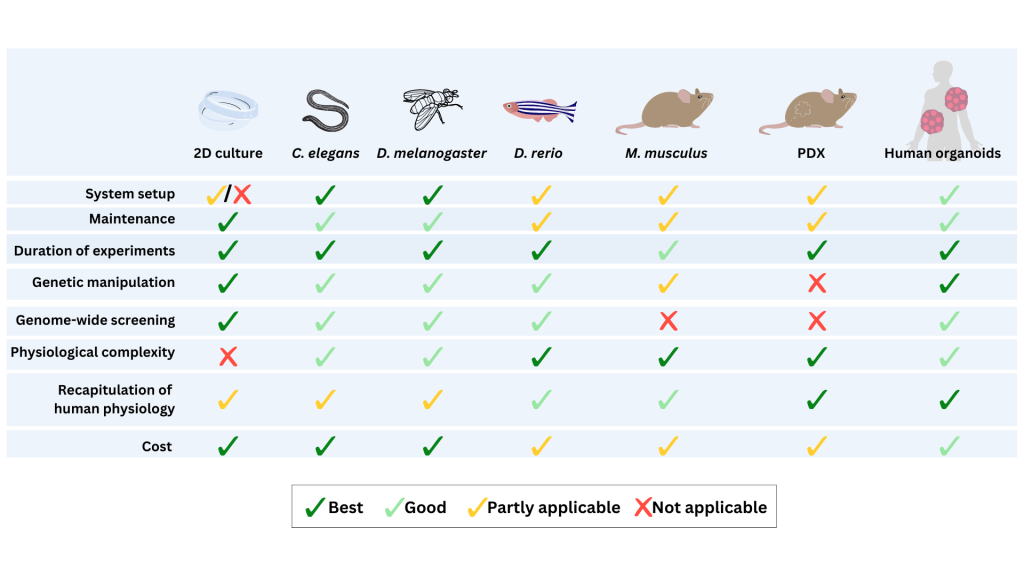The study of biological mechanisms in biomedical research has traditionally focused on a limited number of model organisms. These organisms are chosen for their robustness, short reproduction time, and low cost of maintenance in the laboratory. Yeast, fruit flies, mice, C. elegans, and zebrafish are some of the most widely used model organisms. While the use of model organisms has provided researchers with an established body of knowledge on their development and physiology, it does not completely reflect human physiology. For example, C. elegans, with its largely deterministic development, is useful for cell lineage analysis and discovering cell death pathways. However, pattern formation and some aspects of its physiology are not fully conserved in humans. Mice are the preferred system among mammalian model systems, but there are limitations with regard to the physical inaccessibility of early development and differences between mouse and human physiology. Human-specific biological phenomena cannot be replicated in animal models, which is why human-cell-based models have become necessary. Human-induced pluripotent stem cell (iPSC) technology and diverse human adult stem cell culture methods have made it possible to generate laboratory models – human organoid system – specific to an individual, providing researchers with the opportunity to understand human genetic diversity and its influence on disease onset, progression, and drug responses.
